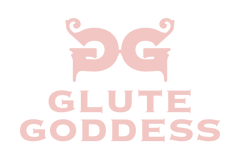Which Muscles Should I Work On If I Want a Bubble Butt?
We all remember when Kim Kardashian broke the internet with her plump, round derriere. And in the years that followed, it’s been the goal of many women (and men) to get that nice, muscular bubble butt.
But achieving that coveted stature isn’t as easy as you would think. There are not only dietary changes to make; there are different exercises for each set of muscles, too. And no, your butt isn’t just made up of one muscle - the gluteus maximus. It’s made up of several different muscles; and you have to do different exercises in order to trim and tone each one.
What are the muscles that form your butt?
There are nine muscles all together, and they can be formed into two groups: there are the main three - the Gluteus Maximus, the Gluteus Medius, and the Gluteus Minimus muscles, which perform the main brunt work of the body.
Then, there is the “lateral rotator group”, comprised of six different horizontally-stretching muscles lying deep underneath the main three.
These are:
- The Piriformis
- The Superior Gemellus Muscle
- The Obturator Internus Muscle
- The Inferior Gemellus Muscles
- The Quadratus Femoris
- The Obturator Externus
These lateral rotators aid the body in moving the leg sideways and rotating it around. Luckily, we don’t have to worry about these ones for our purposes. In order to get a muscular bubble butt, we just need to focus on the main three - the gluteus maximus, medius, and minimus.
The Gluteus Maximus
The Gluteus Maximus is the main muscle that you want to target in your journey to obtain the muscular bubble butt. This muscle is one of the powerhouse muscles of the body, and is responsible for sitting, standing, walking, and crouching. It also connects to the back muscle that links to your shoulders, and can even affect them, as well.
Its main function, though, is in moving the leg behind you, moving the leg to the side, and stabilizing the pelvis when you lean forward. Exercises that strengthen and tone this muscle include, but are not limited to: donkey kicks, deadlifts, squats, glute bridges, and lunges.
The Gluteus Medius
The gluteus medius lies right underneath the gluteus maximus, and a little to the side. If you place your hand on the side of your rump, you can feel the muscle there contract and expand if you shift your weight.
The gluteus medius is like the nosy neighbor of the muscles. It’s involved in everything. It helps with hip extensions, leg lifts, and rotating the leg to the side.
The Gluteus Minimus
The gluteus minimus is a small but important little muscle. It sits right underneath the gluteus medius, stabilizing the hip and rotating the legs. Sometimes, this muscle can take on more than it can handle and gets strained more than the others. When this happens, it can cause pain to rush down the side of your leg, similar to sciatica from a disc injury.
Luckily, if we work on this muscle carefully, it will strengthen the muscle and reduce the likelihood of this happening. A few exercises that will help include pistol squats, single leg deadlifts, clam shells, crab walking, and single leg toe touches, to name a few. And the better news is that these exercises also work the gluteus medius, too.
How To Get That Muscle Bubble Butt
1. Activate Your Glute Muscles with a warm-up.
As with any exercise, you want to activate your muscles first to ensure that they are stretched out and ready to go. Stretching and foam rolling is a great way to do this.
Cardio is also recommended. Some of the glute muscles are called “fast-twitch” muscles, and some of them are called “slow-twitch” muscles. The fast twitch muscles are used in sprinting and heavy lifting. These are best warmed up with stretching and low-impact exercises. The slow-twitch muscles are used in endurance scenarios, which is why activities like walking or jogging helps to get them activated.
2. Work those Glute Muscles!
Next, add in glute exercises that are weight-bearing. If you have an ankle weight, a great way to do this is by doing kickbacks using the ankle weight. You can also do donkey kicks this way, too.
If you want to add resistance to other exercises, you can also hold dumbbells while doing squats and lunges.
3. Finish with lower-weight, higher-repetition exercises.
Here is where the sweating and endurance exercises kick in. Burpees, crab walks, jumping jacks, (and if you’re in a gym, the leg press) are all great exercises to work on those slow-twitch muscles with.
The Bottom Line
Sometimes when people aren’t seeing results it can be because of diet. And sometimes it can be because they’re not working ALL the muscles in their buttocks. If you’d like an assessment of your glute workout, or would like a custom plan created for your specific body type, you can sign-up here. We’d be happy to review your current routine and work with you on creating that perfect, muscle bubble butt.

